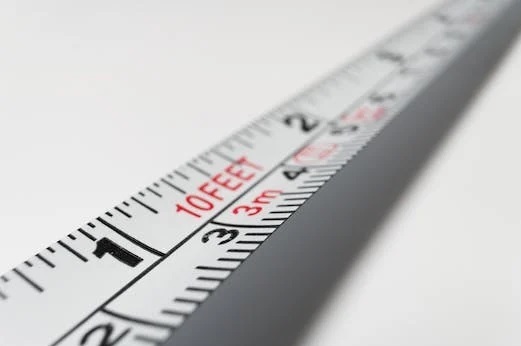Last week Sheila Duffy, Chief Executive of ASH Scotland, appeared in an English language episode of Turkish Radio and Television Corporation‘s “The Newsmakers” to discuss England’s approach to e-cigarettes. They also has the director of the tobacco industry front group Consumer Choice Center. Sheila was quite strong in pointing out that Scotland, Wales and IrelandContinue reading “Glantz and Duffy appear on The Newsmakers to discuss England’s misguided approach to ecigs”
Category Archives: lung disease
JHU Public Health on Call podcast on study comparing e-cig and cig disease risks
The Johns Hopkins University School of Public Health “Public Health on Call” podcast did an episode on our paper comparing the risks of e-cigarettes and cigarettes. You can listen to it here.
Why does the Royal College of Physicians report on ecigs and harm reduction minimize knowledge of the adverse effects of nicotine beyond addiction?
E-cigarettes and Harm Reduction: An Evidence Review, the latest in a series of reports it has published since 2007 endorsing e-cigarettes for harm reduction. In this report, the RCP minimizes the adverse health effects of nicotine (beyond addiction), concluding that “There is little evidence of a long-term harmful physiological effect of nicotine that is notContinue reading “Why does the Royal College of Physicians report on ecigs and harm reduction minimize knowledge of the adverse effects of nicotine beyond addiction?”
Why is the Royal College of Physicians concluding e-cigs reduce harm while ignoring the substantial associations between e-cigs and actual disease?
On April 18, 2024 the UK Royal College of Physicians published E-cigarettes and Harm Reduction: An Evidence Review, the latest in a series of reports it has published since 2007 endorsing e-cigarettes for harm reduction. The report covers a wide range of topics, including assessing the health risks of e-cigarettes, the central question on whetherContinue reading “Why is the Royal College of Physicians concluding e-cigs reduce harm while ignoring the substantial associations between e-cigs and actual disease?”
Why is the FDA still pushing e-cigs as lower risk based on ancient evidence?
Today (April 16, 2024) the FDA released a new web page on The Relative Risks of Tobacco Products that irresponsibly promotes e-cigarettes as a lower risk alternative to cigarettes. This recommendation is based on the 2018 National Academy of Sciences, Engineering and Medicine report on e-cigarettes that concluded that e-cigarettes reduce exposure to some toxicContinue reading “Why is the FDA still pushing e-cigs as lower risk based on ancient evidence?”
Read the behind scenes story of the 1964 Surgeon General Report on Smoking and Health
The 1964 Report on Smoking and Health represented a turning point in the history of tobacco in the United States and the world. Now Don Shopland [photo above], who at the time was an eighteen year-old, “newly working at the National Library of Medicine,” who found himself moonlighting for the Surgeon General’s Advisory Committee thatContinue reading “Read the behind scenes story of the 1964 Surgeon General Report on Smoking and Health”
NOW OPEN ACCESS: E-cigs have similar risks to cigs for some diseases and nearly as high for others. Dual use riskier than smoking alone
NEJM Evidence has graciously made our recent paper, “Population-Based Disease Odds for E-Cigarettes and Dual Use versus Cigarettes,” open access so that anyone can read and download it for free. As described in more detail in my blog post on the paper, it uses data from 107 population epidemiology studies of the association between e-cigaretteContinue reading “NOW OPEN ACCESS: E-cigs have similar risks to cigs for some diseases and nearly as high for others. Dual use riskier than smoking alone”
5 year longitudinal study finds e-cigs and cigs have similar risks for respiratory disease and COPD; dual use is worse
Beibei Song and colleagues’ new paper, Impact of electronic cigarette usage on the onset of respiratory symptoms and COPD among Chinese adults, finds that e-cigarettes and cigarettes pose similar risks for causing respiratory symptoms and chronic obstructive disease (COPD) in Chinese adults. Dual use is worse than using either product alone. This is a veryContinue reading “5 year longitudinal study finds e-cigs and cigs have similar risks for respiratory disease and COPD; dual use is worse”
Smoking cessation quickly reduces mortality, within 3 years
It’s been long-established that quitting smoking prolongs life and that quitting young (below about 40) eliminates all or almost all the mortality costs of smoking. The new paper Smoking Cessation and Short- and Longer-Term Mortality by Eo Rin Cho and colleagues extends this case to more recent data and from several countries. While they confirmContinue reading “Smoking cessation quickly reduces mortality, within 3 years”
FDA needs to reconsider its promotion of the “continuum of risk” for e-cigarettes
As of February 22, 2024, the FDA was continuing to embrace the idea that there is a “continuum of risk” with combusted tobacco as the riskiest and e-cigarettes being substantially less risky. As a result, FDA promotes e-cigarettes as a way for smokers to reduce risk. This view is based on the fact that e-cigarettesContinue reading “FDA needs to reconsider its promotion of the “continuum of risk” for e-cigarettes”







